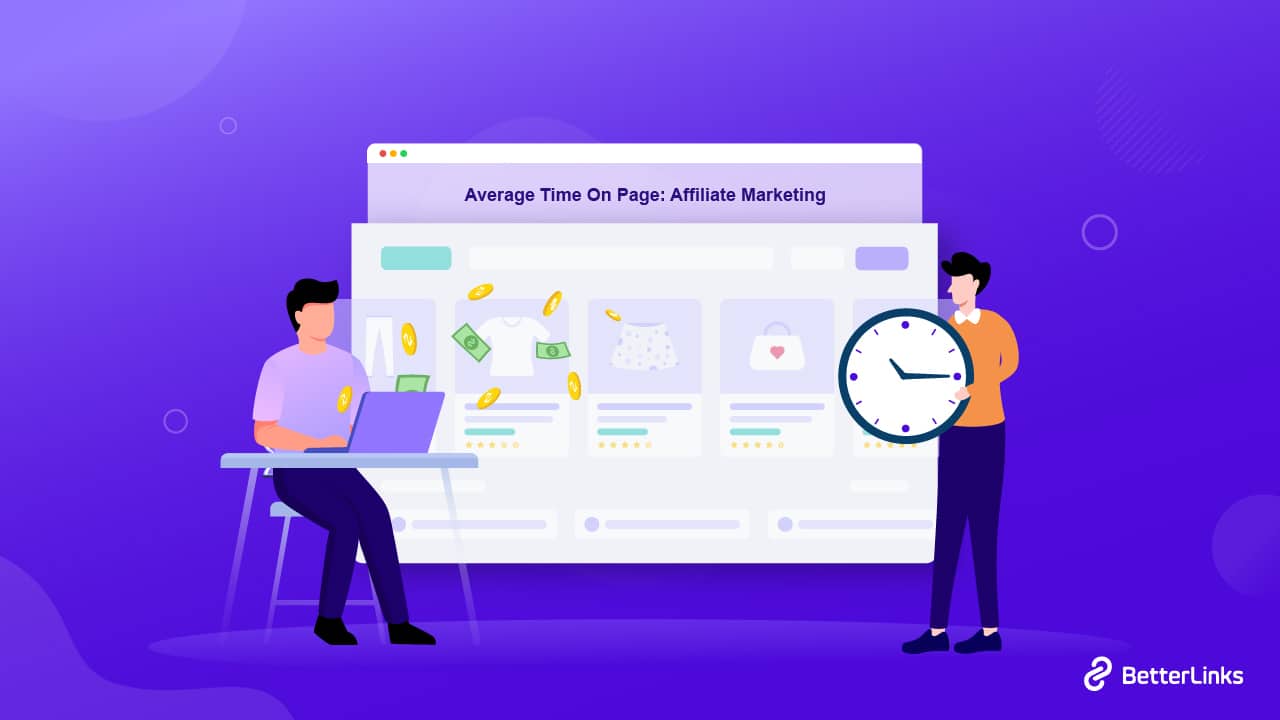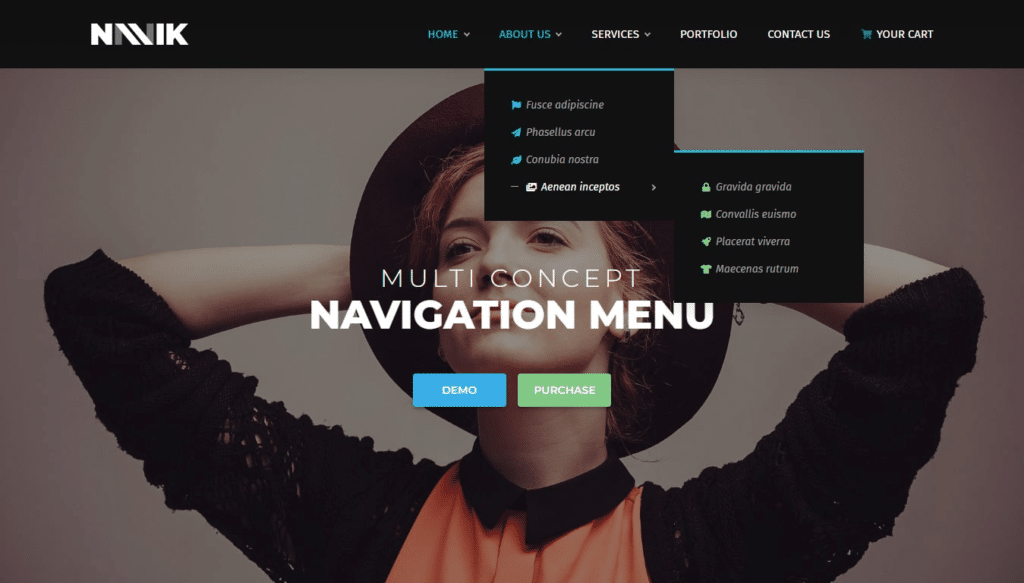Looking to improve your affiliate marketing strategy? The average time on page metric can be a key factor in determining your success. In this blog post, we’ll explain why it matters and offer tips for increasing it.

What Is Average Time On Page?
In the world of online marketing, the average time spent on page is a crucial metric for evaluating user engagement and overall website performance. It represents the amount of time that visitors spend on a specific page before navigating away from it. For affiliate marketing, the average time on page is particularly important because it can indicate whether or not your website content is resonating with your target audience.
To calculate the average time spent on page, you need to divide the total time visitors spend on a page by the number of page views minus the total number of exits and bounces. This calculation helps you to understand how well your content is performing and identify any areas for improvement.
Average Time On Page = ( Total Time Spend On Page ) / ( Total Page Views - ( Total Exists + Bounces ))
What Is A Good Average Time On Page Benchmark?
The average time on page can vary significantly based on factors such as the industry, type of website, and the specific page being analyzed. While industry benchmarks can provide a general guideline, it is important to set your own targets based on your website’s unique context and goals.
According to the 2021 Digital Experience Benchmark report by Contentsquare, the average time on a page across all industries is 54 seconds. However, this number may not be applicable to all websites, as factors such as content type, user behavior, and device type can significantly affect the average time on a page.
For example, blogs and content-heavy websites typically have a longer average time on page, with some websites reporting an average of 3-5 minutes per page. On the other hand, landing pages and product pages may have a shorter average time on the page, as users may quickly find what they are looking for or proceed to checkout.

Source: Contentsquare
To determine a good average time on page benchmark, it is important to consider the specific goals of your website. For instance, if your website’s primary goal is to increase conversions, then a shorter average time on page may be better, as it may indicate that users are quickly finding what they are looking for and proceeding to the next step.
On the other hand, if your website’s goal is to increase engagement and time spent on the website, a longer average time on page may be more desirable. This may be the case for content-heavy websites or websites that rely on advertising revenue, where longer engagement times may lead to more page views and ad impressions.
Ultimately, a good average time on page benchmark will depend on your website’s unique context and goals. It is important to regularly track and analyze your website’s average time on page, and use this data to make informed decisions on how to improve user engagement and achieve your website’s goals.
Google Analytics: Average Time on Page
Google Analytics defines time on page as the “average amount of time users spent viewing a specific page or screen, or set of pages or screens.” For most websites, this is the time a website visitor spends reading or interacting with the contents on a single page.
The duration is computed starting from the moment a user lands on a page and continuing until they click to navigate to the next one. Therefore, if a user lands on a page and leaves without clicking, Google Analytics will not register the time spent on that page.
While Google Analytics keeps track of the time spent on a page, it has a flaw. It can only record the time between landing on one page and going to another on the same website. Therefore, if someone visits many pages on a site, the time spent on the last page will not be recorded. Also, Google Analytics records time on page irrespective of whether the browser window is in a visible or hidden tab.
Why Average Time On Page Matters in Affiliate Marketing?
When it comes to affiliate marketing, understanding the average time spent on page can provide valuable insights into user behavior and engagement with your website. In fact, the average time on a page is one of the most important metrics that affiliate marketers should track.
What is affiliate marketing? Affiliate marketing is a performance-based marketing strategy in which an affiliate promotes a product or service on their website and earns a commission for each sale made through their unique affiliate link. In order to be successful in affiliate marketing, it’s crucial to attract visitors to your website and keep them engaged with your content.
This is where the average time on page comes in. By tracking how long visitors are spending on your pages, you can gain valuable insights into which pages are resonating with your audience and which ones need improvement.
A good average time on page means that users are spending more time on the affiliate marketer’s website, engaging with the content and the products being marketed. This is a positive indication that the affiliate marketer’s goal is being fulfilled, as it shows that users are interested in the content and products being displayed.
A decent average time on the page can also result in more ad impressions, which can increase your ad revenue. According to a study by Chartbeat, visitors who spend more time on a website are 2.5 times more likely to view an ad than those who spend less time.
Spending more time on your website does not necessarily signify a positive outcome. As it could indicate that users are struggling to engage with your content, resulting in longer stay durations. For instance, if your checkout page is inadequately designed, users may encounter difficulty while completing the checkout process, leading to prolonged stay times. Therefore, it is imperative to monitor your average time on page closely.
Then again if you notice that visitors are spending a shorter-than-average time on a particular page, it could indicate that the content needs to be more engaging or that there’s a problem with the page layout.
In summary, tracking the average time on a page can provide valuable insights for affiliate marketers looking to optimize their website and create engaging content that resonates with their audience. Let’s take a look at some of them:
How To Increase Average Time On Page? Tips And Tricks
Now that you understand how imporant it is to measure the average time your readers spend on your website, let’s take a look at some strategies that can help you increase average time on page.
Decrease Load Time
If your website takes too long to load, your bounce rate can reach 90%, according to a Google study. This means that visitors will leave your site right away, even if you have a lot of traffic. A survey on consumer behavior shows that visitors expect a website to load within 2 to 3 seconds, and won’t wait for a slow page to load when there are many other options available.
A study commissioned by Google and conducted by 55 and Deloitte found that reducing mobile site load times by just one-tenth of a second resulted in significant decreases in bounce rate. For example, the home page bounce rate decreased by 0.6%, the product listing page bounce rate decreased by 5.7%, and the product details page bounce rate decreased by 1.9%. This highlights the importance of optimizing mobile site load times to improve user experience and reduce bounce rates.

Source: Deloitte
To reduce your website’s bounce rate, it’s important to optimize your page loading time. This can lead to increased engagement with your content, resulting in a longer average time on page. By ensuring your page has an optimal loading time, you can improve user experience and increase the likelihood of visitors spending more time on your site.
Organized Navigation
Well-designed website navigation can help visitors quickly find the information they’re looking for, improving their chances of taking action and spending more time on your site. To optimize your navigation, prioritize the most important items, use clear and SEO-optimized labels, and include a search box.
Adding navigation links in the header, sidebar, and footer can also improve usability. A clear and organized navigation menu can help reduce bounce rates by making it easier for users to find the content they need. So, use descriptive labels and consider using drop-down menus to categorize subpages.

Use internal links
Adding internal links to your website is an effective way to make it easier for visitors to find and read relevant content, which can lead to increased engagement and a longer average time on page. By providing links to related content, you can encourage readers to explore your site and learn more about your offerings. Consider including internal links within your blog posts, such as for related subtopics, to improve the overall user experience.

Source: BetterLinks
Configure Links to Open in a Fresh Window
Configuring links to open in a fresh window is an effective strategy to increase the average time that users spend on your website. When a link opens in a new window, it allows users to continue browsing the current page while keeping the linked content open in a separate window.
However, it’s important to use this technique judiciously, as excessive use of new windows can lead to a cluttered browsing experience for your users. It’s best to limit the number of links that open in new windows to those that are essential for the user’s experience.
By configuring links to open in a fresh window selectively, you can enhance the user’s browsing experience, improve engagement with your website, and ultimately increase the average time on page.
Add Multimedia Content
Adding multimedia content, such as images, videos, and audio files, can help to increase engagement and keep visitors on your site for longer periods of time. This is because multimedia content can provide an interactive and visually engaging experience for your users, making your site more appealing and enjoyable to explore.
For example, if you have a blog post that includes an image or video, readers are more likely to spend time looking at that content, which can increase the average time spent on the page. Additionally, multimedia content can help to break up large blocks of text and make your content more visually appealing and easy to digest.
Device Responsiveness
Ensuring that your website is responsive and optimized for various devices is crucial for keeping visitors engaged and on your site longer. With more and more users accessing websites on their mobile devices, having a mobile-friendly website is more important than ever before.
In fact, research shows that 64% of SEO marketers say mobile optimization is an effective investment. Additionally, HubSpot research has found that 50.3% of marketers leverage mobile optimization in their SEO strategies, and 45.4% say that optimizing for mobile is one of the most effective strategies for ranking highly on the SERPs.
A responsive website design ensures that your site is accessible and easy to use on any device, whether it be a desktop computer, tablet, or smartphone. By providing a seamless experience across all devices, you can improve user engagement and increase the chances of users staying on your site longer.
By implementing these strategies, you can improve your website’s user experience and increase the average time on page, ultimately leading to higher engagement and potentially better affiliate marketing results.
If you found this blog helpful, we would love for you to subscribe to our blogs and stay up-to-date with our latest content. Join our Facebook community and be the first to know about our latest tips and tricks. Happy reading!




